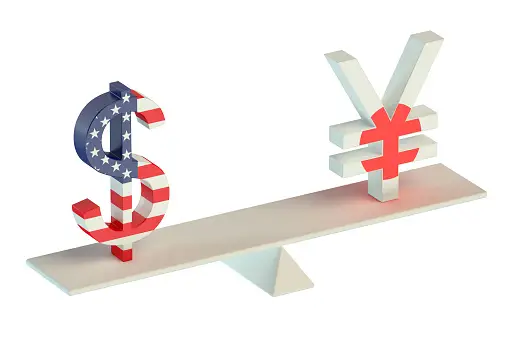Japanese yen continued to struggle to gain any serious traction.
During the Asian session on Tuesday, the Japanese Yen (JPY) extended its sideways consolidative price move and remained within striking distance of the year to date low against its American counterpart reached last week. The Bank of Japan (BoJ) stated last week that financial conditions will remain accommodating. But did not provide any advice on the pace of policy normalization. This, together with The underlying optimistic attitude in the equities markets is perceived as hurting the JPY.
Fears of intervention provide some support, while policy uncertainty at the Bank of Japan serves as a drag.
Nonetheless, suspicion that Japanese officials will interfere in the markets to prevent more JPY depreciation remains a tailwind. Aside from that, bets that the Federal Reserve (Fed) will begin cutting interest rates in June put US Dollar (USD) bulls on the defensive. And should limit the upside for the USDJPY pair. Traders are now looking to US economic data Durable Goods Orders, the Conference Board’s Consumer Confidence Index. And the Richmond Manufacturing Index for further momentum.
Daily Market Movers: Japanese Yen Lacks Firm Intraday Direction Amid Mixed Fundamental Cues.
Masato Kanda, Japan’s Vice Minister of Finance for International Affairs, has lifted the threat of actual
intervention on Monday and turns out to be a crucial factor in providing some support for the Japanese yen.
Kanda stated that the JPY’s movement was not consistent with fundamentals and was driven by speculation. And that authorities will take measures against excessive volatility without ruling out any options.
In addition, Finance Minister Shunichi Suzuki reaffirmed on Tuesday. That currencies must move in a stable way that reflects fundamentals. Adding that fast FX movements are undesirable.
Last week, the Bank of Japan signaled that financial conditions will remain accommodating. But did not provide any advice on the pace of policy normalization, restricting Japanese yen gains.
Consumer inflation in Japan continues to exceed the central bank’s 2% target. This, combined with the positive conclusion of spring salary negotiations, raises the probability of further policy tightening by the Bank of Japan.
Last week, the Federal Reserve lifted its real GDP growth forecast for the end of the year to 2.1% from 1.4% in December, as well as its core inflation forecast to 2.6% from 2.4%.
The US macro data released on Tuesday should provide some encouragement ahead of the US PCE Price Index on Friday.
Despite concerns about persistently high inflation and stronger than expected economic indicators. The Fed indicated that it will decrease interest rates by 75 basis points this year.
Atlanta Fed President Raphael Bostic said on Monday that he expects the US economy and inflation to ebb gradually. And that the US central bank would only decrease interest rates once this year.
Chicago Fed President Austan Goolsbee said that three cuts in 2024 were consistent with his theory. But the US central bank must show improvement in inflation and find a balance with its dual mandate.
Separately, Fed Governor Lisa Cook stated that inflation had declined significantly. While the route to disinflation, as expected, has been rocky and uneven, while the job market has remained solid.
Japanese yen Investors are now looking forward to the release of the BoJ Core CPI for some substantial momentum ahead of the US macro data. Which includes Durable Goods Orders and the Conference Board’s Consumer Confidence Index.









